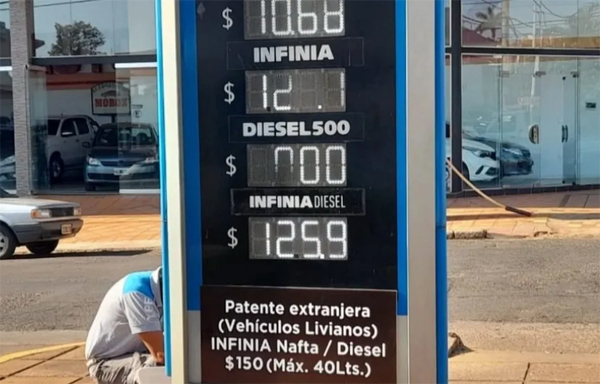- Distributors send out last-minute tenders as demand grows
- Refined product prices across country on the rise

Maria Jimenez Moya and Matthew Kohlman, Platts
BUENOS AIRES
EnergiesNet.com 12 21 2022
Strong global demand for refined products, represented by futures prices, have increased refined product prices in Argentina.
Refined product prices in Argentina have been on the rise in the past week due to the shift to the summer season and competition for barrels between Latin America and Europe, sources said Dec. 20.
Strong global demand for refined products, represented by futures prices, have increased refined product prices in Argentina.
Argentina’s diesel prices have been on the rise for the past week after a recent slump; the Platts ULSD CIF Argentina Cargo assessment climbed to $120.27/b on Dec. 19, compared to $115.52 on Dec. 7, according to data from S&P Global Commodity Insights. The Dec. 7 price was the lowest level recorded since mid-February, when global diesel prices spiked following Russia’s invasion of Ukraine.
Argentina’s main refined products distributors, Cammesa and YPF, have recently tendered in a pinch to comply with the growing domestic summer demand of diesel. Typically, Argentina is self-sufficient in diesel supply.
“What is going on is that Argentina has very high temperatures during this time,” a market source said. “They are needing a lot of fuel to generate electricity. That is why Cammesa and YPF have gone out to shop out of urgency.”
YPF, Argentina’s state-run oil company, awarded its most recent tender to Trafigura for two cargoes of 45,000 cu m each of ultra low sulfur diesel for the middle of January 2023, market sources said. YPF’s previous tender awarded Glencore two 45,000 cu m cargoes of ULSD for end-December 2022 and early-January 2023 delivery.
“This buy from YPF was expected and goes hand in hand with everything that is happening,” a second market source said.
Argentina’s wholesale power distributor, Cammesa, awarded a tender for eight cargoes of high-sulfur diesel, market sources said Dec. 15. Four of the cargoes were distributed to Trafigura, three to Vitol and one to Chevron. The cargoes will be delivered throughout the entirety of January until the beginning of February in lots of 50,000 cu m to 100,000 cu m for a total of 400,000 cu m.
In the first quarter of 2022, there was another uptick in tendering out of the country, with Argentina asking for more tenders than seen in previous years to restock after meeting power needs caused by severe heat waves and low hydropower. The tenders were some of Latin America’s largest before the start of the Russia-Ukraine conflict that tempered the market.
Market sources said that the market has struggled with the heavy demands of Argentina given the short notice between the tenders and the arrival dates.
“It seems like nobody was able to arrive there in the dates they requested,” a third market source said. “Too little time between the day of the tender and the arrival date.”
Latin America and Europe have been pursuing the same barrels incoming from the US Gulf Coast region, causing the differential to increase, according to market sources.
“Latin America is pulling away barrels that would otherwise go to Europe,” a fourth market source said. “So we are seeing tightening in gasoil and diesel also in the US and Europe.”
Competition for USGC-origin barrels
Market sources also said that the front-month spreads were particularly strong due to a higher-than-average demand of refined products in Latin America, weather conditions, high freight, and a decreased presence of Russian barrels.
Some market sources expected that demand for foreign product will decrease in the months to come as a result of Cammesa improving hydroelectric power generation and expectations of rising river water levels
In December, 590,000 barrels of ULSD was imported into Argentina as of Dec. 19, which was significantly lower than the 2.02 million barrels of ULSD imported into the country in December 2021, Kpler shipping data showed.
However, on a year-on-year basis, broader distillate flow rates from the US increased. US Energy Information Administration data showed the volume of distillates moving into Argentina large spiked from 4.046 million barrels in the first eight months of 2021 to 7.086 million barrels of distillate fuels in the first eight months of 2022. Market sources attributed this spike to more favorable freight prices from the USGC than from other export regions.
spglobal.com 12 20 2022












